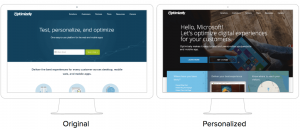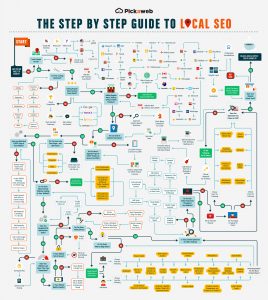Insights into strategic planning to avoid data pitfalls and set a strong foundation for your marketing campaigns.

Having the tools and information to make data-driven decisions is no longer a “nice to have” but a necessity. Teams relying on gut instincts and anecdotal evidence for planning are falling behind more sophisticated brands using predictive analytics and data insights.
Data-driven marketing is the right approach for running campaigns. However, the challenge lies in changing current behaviors and decision-making processes to incorporate better information. This article is the first in a three-part series aimed at helping marketers transition to data-driven decision-making by overcoming common barriers.
We begin with the initial strategy phase, which forms the foundation for successful marketing initiatives. Avoiding anecdotal evidence and other pitfalls during this phase sets the stage for a campaign’s success. Addressing these challenges early on leads to more effective and impactful marketing campaigns.
Where data-driven decision-making goes off the rails
Using great data to make strategic choices seems straightforward and obvious, right? But why do many organizations hit stumbling blocks when they try to take this approach? Let’s explore three common ways the best intentions sometimes quickly go off-course.
Relying on anecdotal evidence
Marketing leaders and experts gain their positions for a reason. They have had great successes and experiences that taught them a lot of what they know. In many cases, what they rely on to help make strategic decisions.
While this sounds like a good thing, there is a danger here. Decisions based on personal experiences or isolated examples — anecdotal evidence or use cases — often have an unintended effect. After all, no two situations are exactly the same, and the lessons learned from one situation may not apply to the current situation.
For instance, a marketer might advocate for a specific social media strategy because it worked well for a colleague’s retail startup, disregarding the significant differences in target audience and market conditions to their enterprise brand.
Through trial and error, great strategists and leaders learned how to apply anecdotal lessons to a situation and when they need to rely on data to determine the best approach. Quite often, even if there is a relevant component of anecdotal evidence, it should be tempered with data directly applicable to the situation.
Is your organization trapped, relying on expert advice that doesn’t utilize the available data? Implement robust data collection and analysis processes to steer clear of anecdotal evidence. Start with comprehensive market research to understand your audience’s behaviors, preferences and needs.
Gather quantitative and qualitative data using tools such as surveys, focus groups and analytics platforms. Ensure decisions are backed by data relevant to your current market conditions and objectives to create more targeted and effective marketing plans.
Lack of clear objectives and KPIs
It is difficult to use data to effectively drive decisions when you don’t know where those decisions need to point you toward. Vague goals and no measurable targets can ruin any marketing strategy, making it nearly impossible to be data-driven.
For example, a lack of clear objectives manifests as a general aim to “increase brand awareness” without specifying what that looks like or how it will be measured. Without clarifying goals and key performance indicators (KPIs), it’s challenging to gauge success or make informed adjustments. Teams might find themselves working hard but not making tangible progress toward meaningful outcomes.
There is also an important distinction between using data after an objective is established versus using data to help you set your targets. For instance, setting a target such as “increase website traffic by 20% in the next quarter” or “generate 500 new social media leads from the upcoming campaign” are good starts. But what does the data tell you about the best sources for traffic or leads? If an increase in web traffic will not likely lead to revenue growth or if social media tends to give you your least valuable customers, all the data available won’t make them good goals.
Instead, determine the high-level problem you want to solve and then use data to drive how you solve the problem. For instance, if your goal is to drive 500 new leads through a new marketing campaign, look at the channels that have driven your customers with the highest loyalty and lifetime value. If that channel is email, for example, then instead of creating a social media campaign, which might waste resources to create, focus on email instead.
Data silos and lack of data access
All of the above advice is predicated on having good access to data and that the data you have access to has a high degree of integrity. This brings us to the third important stumbling block to making good data-driven decisions in the strategy phase of marketing.
Data silos, poor integration and lack of access to critical data make decision-making anywhere from difficult to downright impossible. Among the many causes of this are:
- Data ownership between different departments.
- Fragmented systems.
- Lack of standardized reporting.
This means even the most well-intentioned data-driven decision-maker might rely on incomplete or outdated information to make key strategic choices and plans. How do organizations avoid this stumbling block?
Invest in integrated data systems to solve the technical issues and foster a culture of data sharing across departments to help overcome the people and process silos. Many leading brands implement a marketing-focused customer data platform (CDP) with seamless data integration from various sources, such as CRM systems, social media analytics and email marketing tools.
Leaders should encourage collaboration and communication between teams to ensure valuable data is shared and leveraged effectively and that unknown data gaps are resolved. By breaking down data silos and giving your teams a complete view of your data, you can better understand your customers, their behaviors and your opportunities, leading to more informed decisions.
Where to go from here
Data-driven decision-making in the strategy phase of your marketing efforts lays a solid foundation for the rest of your work. By avoiding common obstacles and using the best and most recent information, you’ll achieve more meaningful results as your campaigns launch, initiatives complete and customers engage with your brand.
In my next article, we’ll explore the importance of data-driven decision-making during the execution of marketing initiatives and how to maintain consistent data monitoring, avoid over-reliance on vanity metrics and enable agile decision-making to optimize your campaigns in real time.
The post Mastering data-driven decision-making in the strategy phase appeared first on MarTech.
(13)
Report Post





